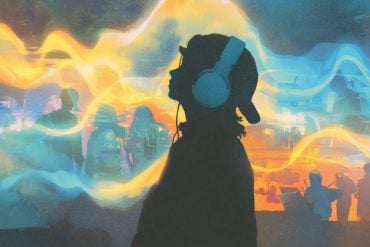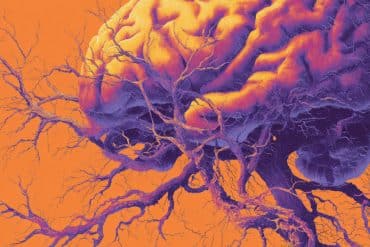Summary: The failure to accurately sense body orientation relative to gravity may result in inappropriate movements or falls, as well as impair daily functions such as walking or carrying objects.
Source: Tohoku University
Our ability to perceive what is truly vertical is crucial. Without it, we would struggle to perform simple tasks such as holding a cup of coffee without spilling it and maintaining appropriate body posture.
Now, an international team of scientists from Japan, Canada and Germany have discovered a new situation from our everyday environment where this ability is compromised—when our body pitches (body pitch) and moves at the same time (body motion).
The scientists’ observations, which were published in the journal Multisensory Research, were based on real-world scenarios, revealing factors long overlooked by past laboratory studies.
“Unlike typical studies of this kind, which happen in well-controlled laboratories, our team traveled to Hong Kong to conduct field research on the world-renowned Peak Tram,” said Dr. Chia-huei Tseng, who led the research and is associate professor at Tohoku University’s Research Institute of Electrical Communication (RIEC). “We performed experiments on hundreds of commuters making their way up Hong Kong’s highest hill, Victoria Peak.”
Although body pitch and body motion have been studied in previous studies, the phenomena were isolated. This study combined both aspects to determine a new situation where verticality becomes distorted.
The team enlisted the help of an architect to build a device that participants could hold to indicate their perceived verticality (i.e., subjective haptic vertical or SHV).
In most laboratory setting, humans are capable of perceiving SHV with an error of less than 1 degree. However, when measurements were taken on the moving Peak Tram, a misjudgment of 10 degrees was observed, something never previously reported.
To investigate the possible sources of errors, the researchers devised additional experiments. First, they had participants close their eyes to rule out visual influences. Then, to eliminate the effects of the vestibular system—the sensory system that creates a sense of balance and spatial orientation—they inserted a back wedge between the participants and their chairs. None of these alternations had much bearing on diminishing the SHV error, ruling out visual and vestibular systems as the primary cause.

The team then turned their attention to motion. They re-created a motion-free seating inclination with a dental chair. Changing the body pitch alone did not create any SHV error.
Additionally, they ran their tests on Hong Kong’s Ding Ding Tram, which runs at similar speeds to the Peak Tram but on a relatively flat surface. In both situations, no bias was detected.
Psychology Professor Kenzo Sakurai from Tohoku Gakuin University, an expert on self-motion and co-author of the study, points out what a major discovery their findings are.
“The failure to accurately sense our body orientation relative to gravity may result in inappropriate movements or falls, as well as impair daily functions such as walking, climbing a staircase, and carrying a tray. In specialized tasks such as driving a car or piloting a plane, this failure could be disastrous.”
Dr. Tseng thinks that their study demonstrates a great example of scientific inquiry generalizing the actual world we live in. “On top of its pure scientific contribution, this study challenges the misconception that research is limited to scientific cubicles indoors. In this case, the natural environment provided a well-designed puzzle for scientists to solve.”
With international travel restriction gradually lifting, the paper’s authors encourage those to take a ride on Hong Kong’s Peak Tram to feel this fascinating perceptual phenomenon. But maybe wait until after the ride to get your coffee.
About this locomotion research news
Author: Press Office
Source: Tohoku University
Contact: Press Office – Tohoku University
Image: The image is in the public domain
Original Research: Open access.
“Body Pitch Together With Translational Body Motion Biases the Subjective Haptic Vertical” by Chia-Huei Tseng et al. Multisensory Research
Abstract
Body Pitch Together With Translational Body Motion Biases the Subjective Haptic Vertical
Accurate perception of verticality is critical for postural maintenance and successful physical interaction with the world. Although previous research has examined the independent influences of body orientation and self-motion under well-controlled laboratory conditions, these factors are constantly changing and interacting in the real world. In this study, we examine the subjective haptic vertical in a real-world scenario.
Here, we report a bias of verticality perception in a field experiment on the Hong Kong Peak Tram as participants traveled on a slope ranging from 6° to 26°.
Mean subjective haptic vertical (SHV) increased with slope by as much as 15°, regardless of whether the eyes were open (Experiment 1) or closed (Experiment 2).
Shifting the body pitch by a fixed degree in an effort to compensate for the mountain slope failed to reduce the verticality bias (Experiment 3). These manipulations separately rule out visual and vestibular inputs about absolute body pitch as contributors to our observed bias.
Observations collected on a tram traveling on level ground (Experiment 4A) or in a static dental chair with a range of inclinations similar to those encountered on the mountain tram (Experiment 4B) showed no significant deviation of the subjective vertical from gravity. We conclude that the SHV error is due to a combination of large, dynamic body pitch and translational motion.
These observations made in a real-world scenario represent an incentive to neuroscientists and aviation experts alike for studying perceived verticality under field conditions and raising awareness of dangerous misperceptions of verticality when body pitch and translational self-motion come together.






